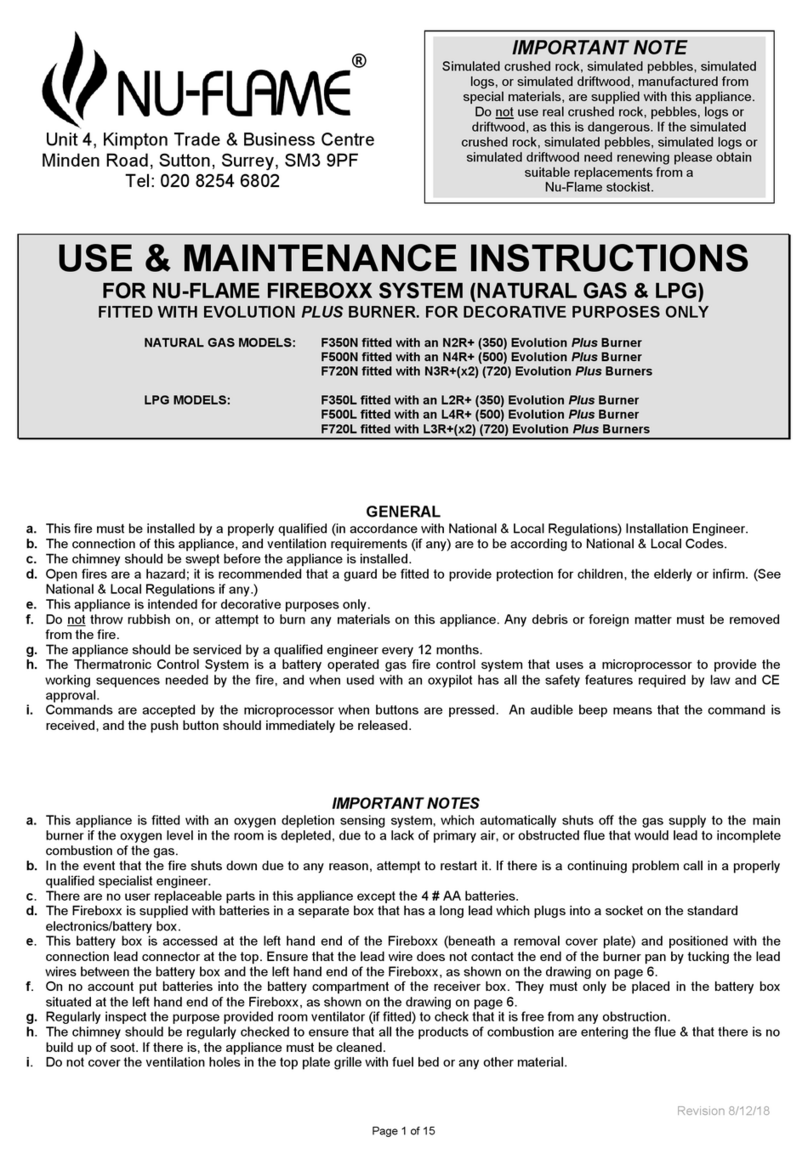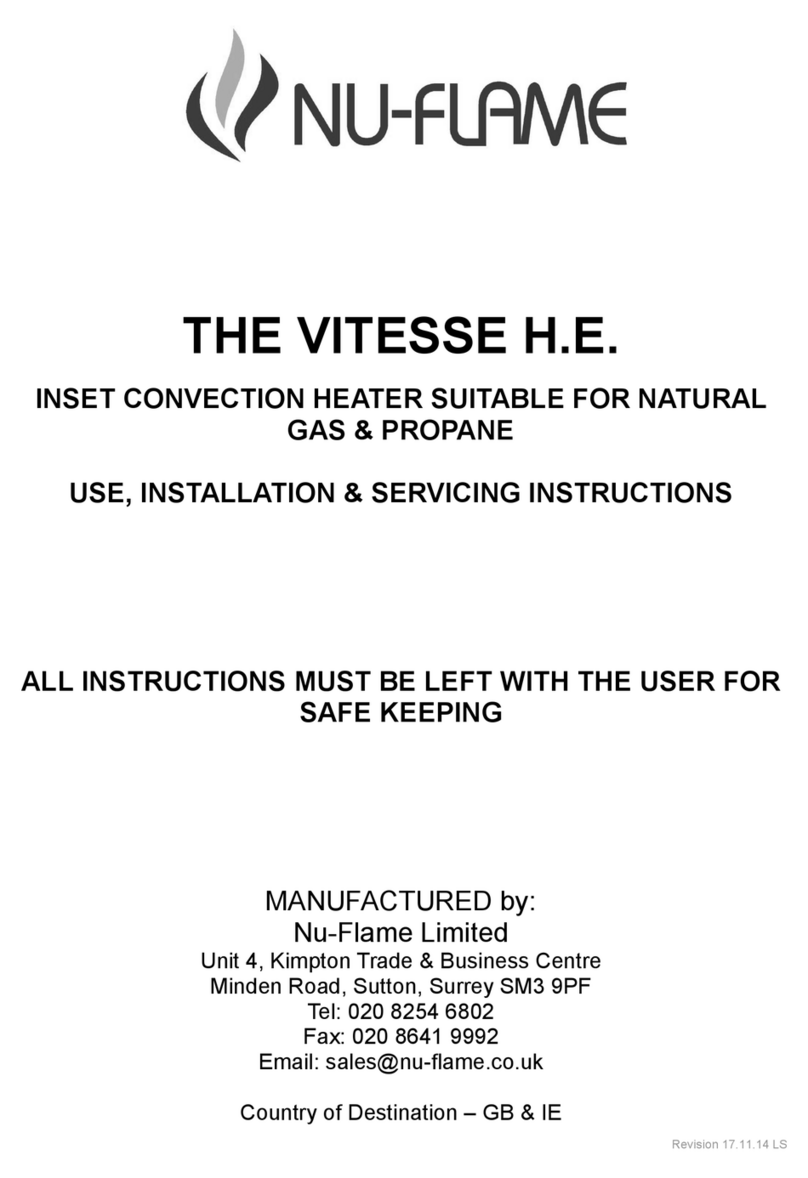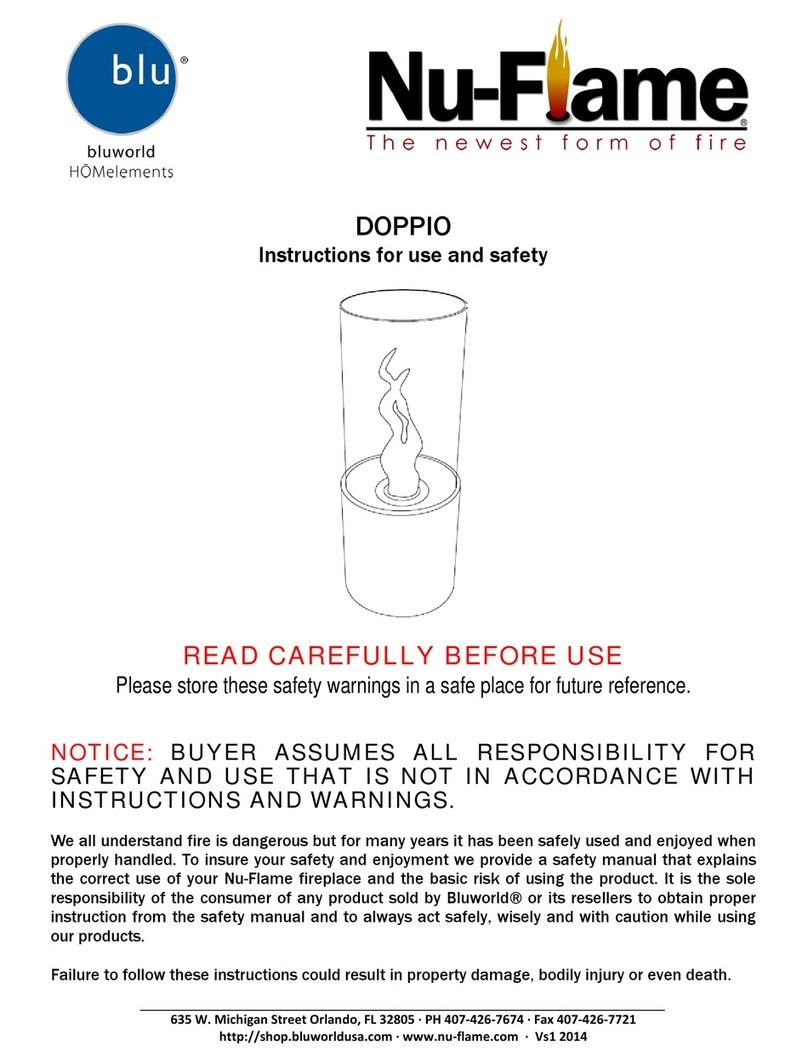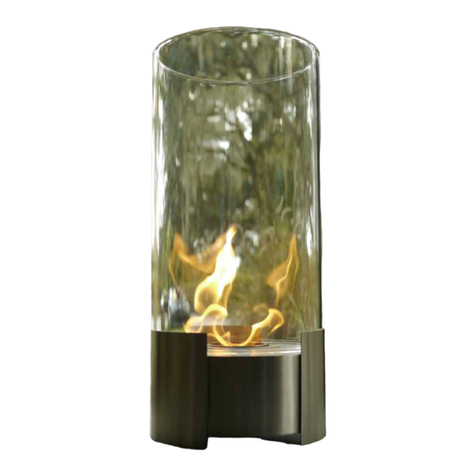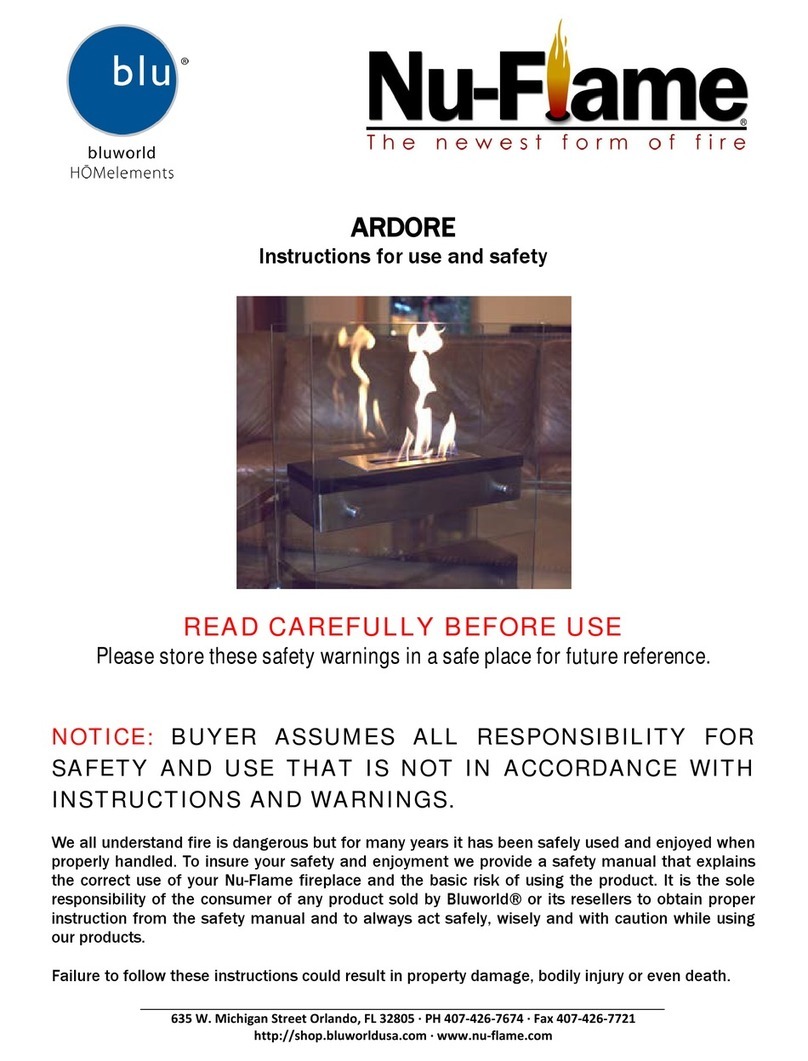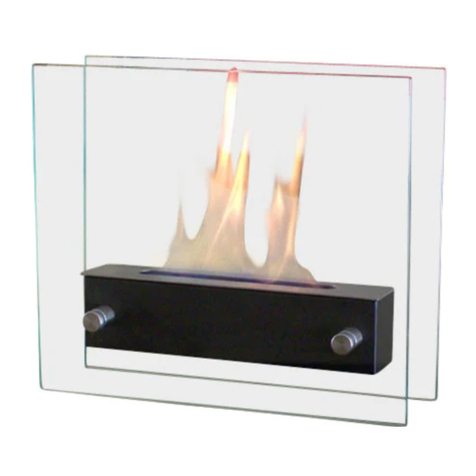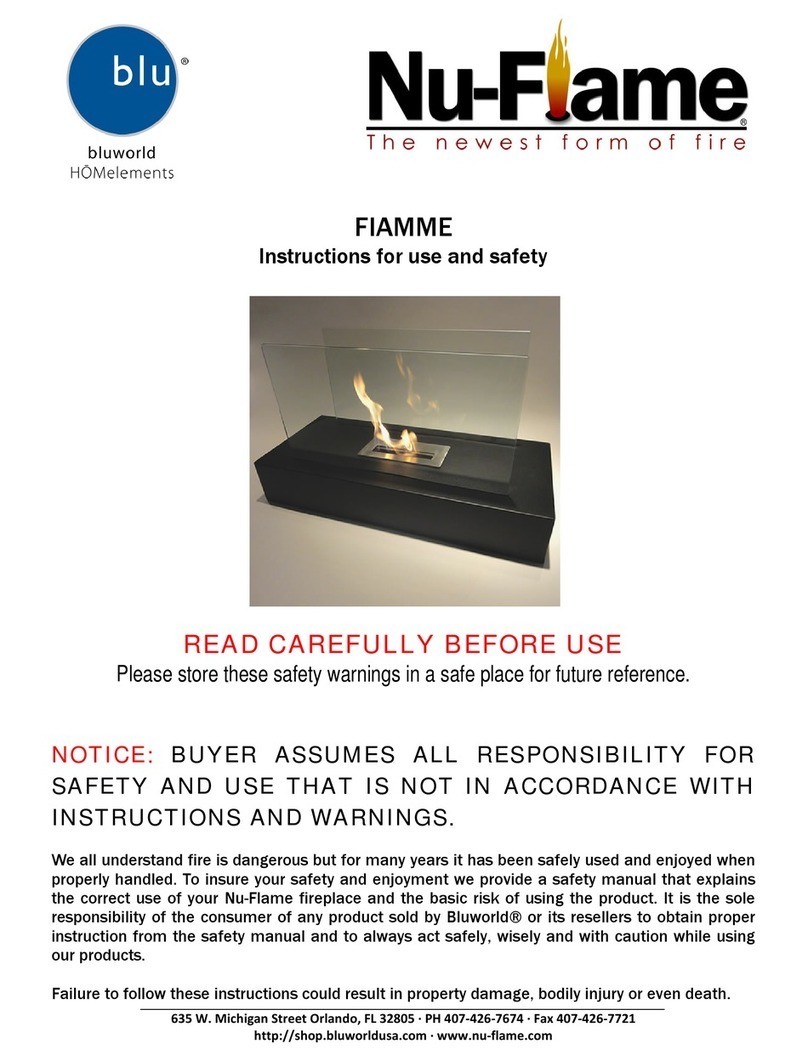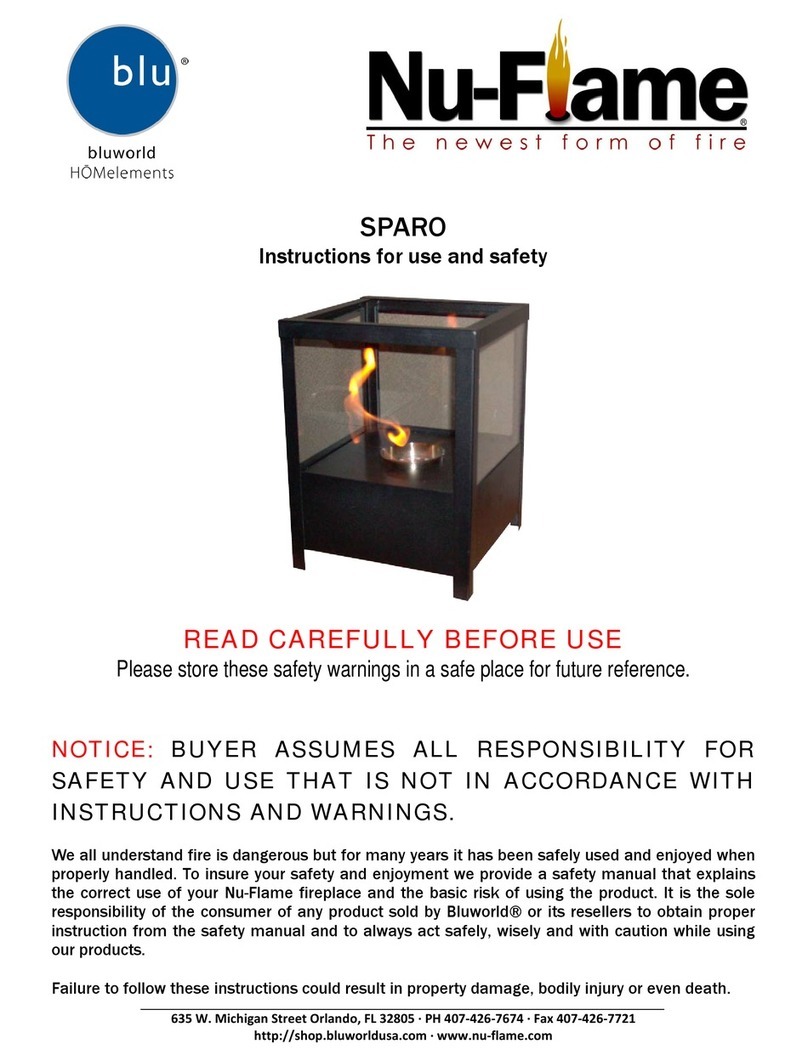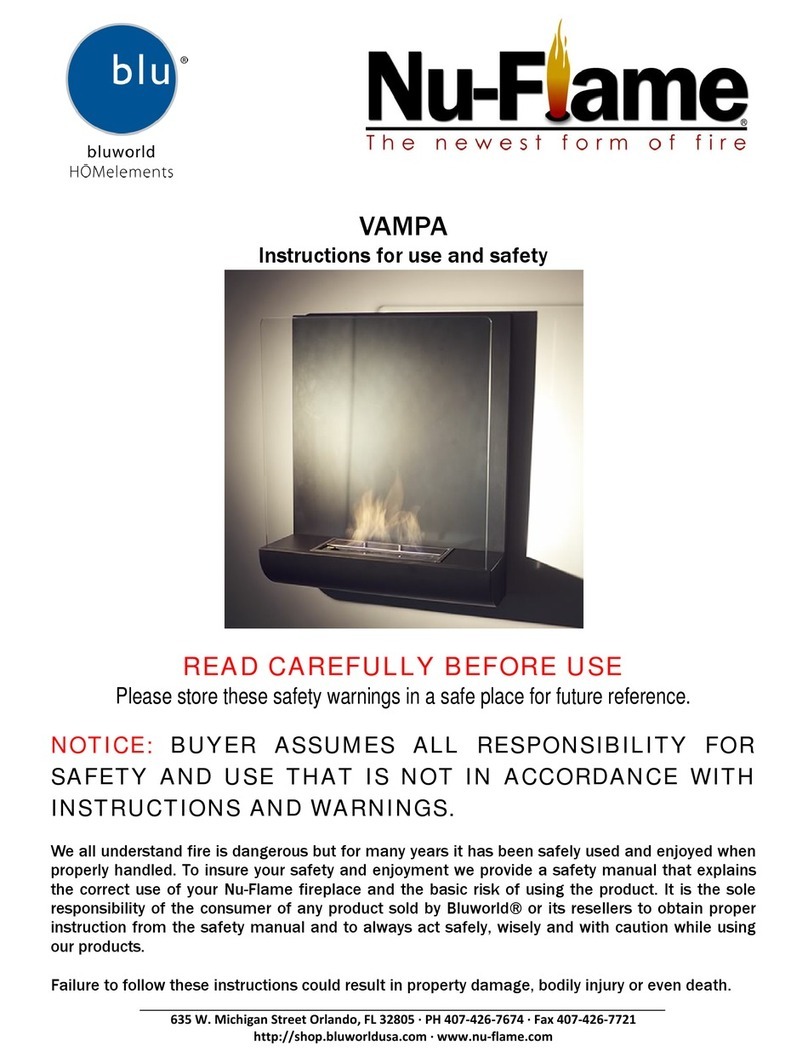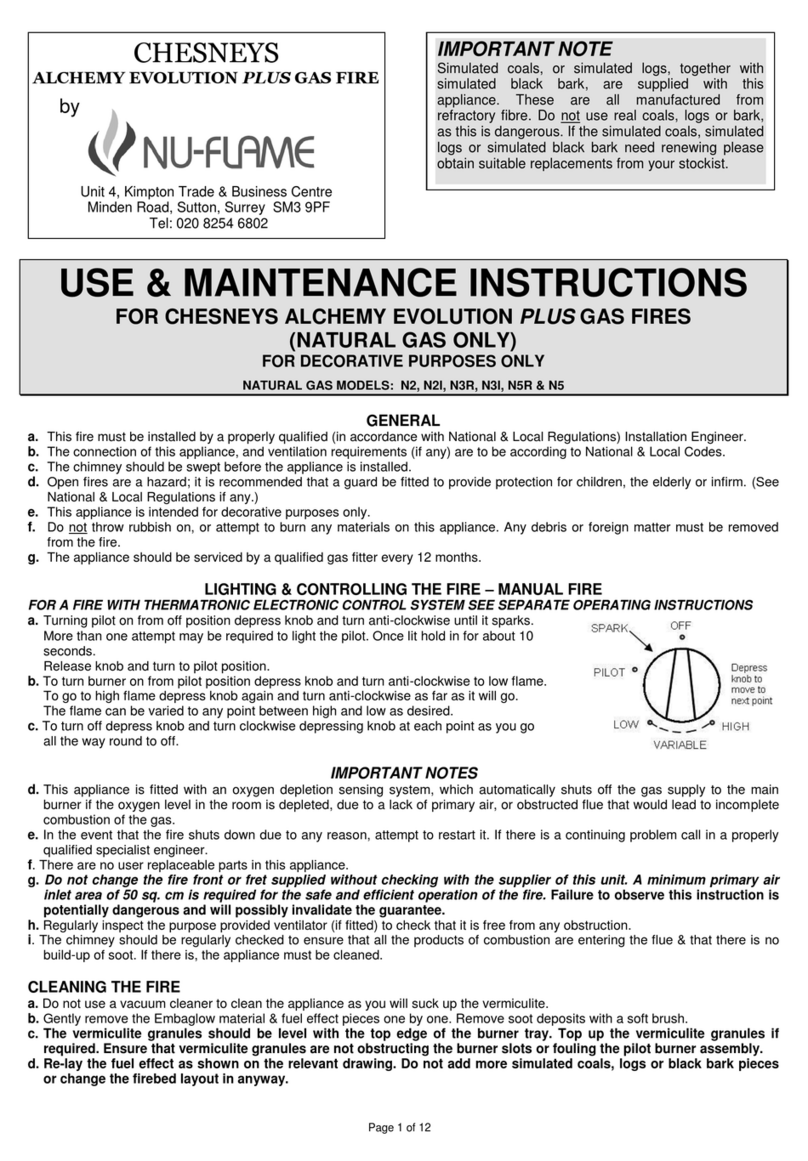Page 9 of 10
INSTALLATION & SERVICING INSTRUCTIONS (continued)
COMMISSIONING THE FIRE
a. Close all doors and windows, check operation of controls and burn for 5 minutes. Test for spillage of the flue products using a
smoke match. Pass the lighted match along the top front edge, just inside the fire opening. If there is a small amount of
spillage, run the fire for a further 10 minutes and re-test for spillage. If there is still spillage after the second test,
DISCONNECT THE FIRE AND SEEK EXPERT ADVICE.
NOTE. If there are extractor fans in the room or adjacent rooms, these must be running at full speed setting with all
interconnecting doors left OPEN.
b. A smell may be experienced when the appliance is first commissioned. This is due to the new components of the fire. These
odours will cease after the first few hours of burning.
SPECIAL NOTES
a. This fire should be serviced every 12 months to ensure safe operation.
b. Servicing and spares are available from your stockist.
c. The fire may smell for the first few hours. This is due to the newness of the components and will cease in a few hours. If it
does not consult your dealer straight away.
d. Open fires are a hazard; it is recommended that a guard be fitted to provide protection for children, the elderly, or infirm (see
National Regulations, if any).
e. If using a vacuum cleaner to clean the appliance be very careful not to suck up the vermiculite.
f. Debris and soot should be cleaned from the fire with a soft brush.
g. Regularly check that the fixed air supply (if applicable) is free of any obstructions.
h. If property improvements are made, such as double glazing or cavity wall insulation added, then the fire spillage test should
be made again to ensure all products of combustion enter the flue.
Note. SEEK EXPERT ADVICE IF YOU ARE UNSURE OF ANY POINTS REGARDING THE SAFE USE OF THIS APPLIANCE.
FAULT FINDING GUIDE. SYMPTOMS AND POSSIBLE CAUSES
1. NO SPARK
Pilot light damaged, or too far away from Electrode, or too close.
Ignition lead has become detached from electrode and needs reconnecting.
Electrode is damaged and needs to be replaced.
Soot on the Pilot assembly and shorting spark. Clean this area with a soft brush.
Faulty ignition lead. Replace.
2. SPARK IS VISIBLE BUT PILOT WILL NOT LIGHT
Check that there is gas to the appliance.
Ensure that isolating valve or restrictor elbow is in the OPEN position.
Valve inlet has become blocked with debris. Clean.
Pilot injector blocked. Clean.
3. PILOT FLAME SHORTENS, OR GOES OUT, WHEN MAIN BURNER IS SELECTED
This indicates insufficient gas pressure to the appliance. Check for debris obstruction.
Check that there are no acute bends in the supply pipe and ensure that the correct diameter supply pipe has been used.
Check pressure setting.
NOTE. If the appliance has been connected to a supply servicing another appliance the supply pipe may not have sufficient
capacity to serve both appliances. Seek advice.
4. PILOT GOES OUT WHEN KNOB IS RELEASED, OR GOES OUT AT REGULAR INTERVALS
Check that thermocouple is not loose. (It should only be nipped up as it is just an electrical and not a gas connection.)
Thermocouple is damaged and needs replacing.
Thermocouple operated magnetic valve faulty – replace gas valve.
5. BLUE FLAME
It normally takes 20 minutes for the fire to reach correct working temperature, by which time most of the blue flame
should have gone. Continuous blue flame is caused by poor coal layout or excessive updraughft of the flue. Seek advice
from your stockist.
6. POOR FLAME PICTURE
Check gas pressure.
Ensure that there are no obvious obstructions to gas supply pipe.
Re-lay the simulated coals, pebbles logs or driftwood as shown in the relevant drawing.
SERVICING INSTRUCTIONS
IMPORTANT: Turn OFF gas supply before servicing commences.
1. Remove all debris and dust from fire.
2. Remove simulated coals/pebbles/logs/driftwood from burner tray and gently dust off with a soft brush.
3. Disconnect gas supply and remove burner tray assembly.
4. Carefully remove granules and retain.
5. Check Pilot and Gas valve assembly for gas soundness. Continue with service as required.
6. Refer to vermiculite section page 4 and 5
7. When replacing the vermiculite and re-laying the firebed please refer to the ARRANGEMENT OF FUEL EFFECT section
commencing on page 6 of these instructions.

